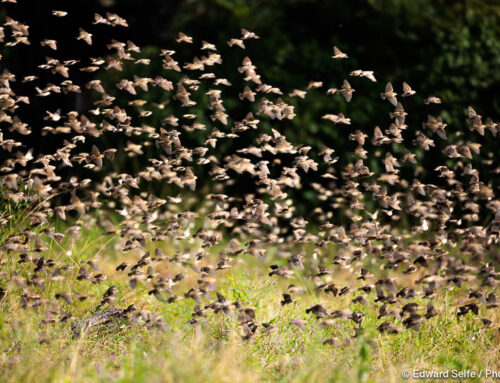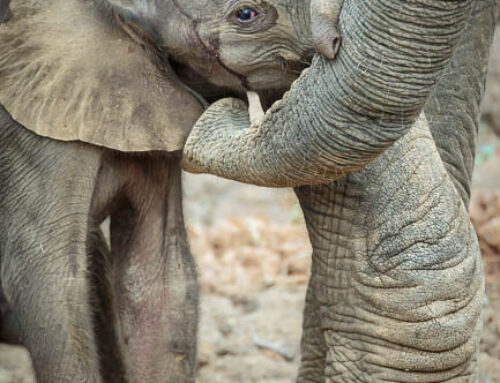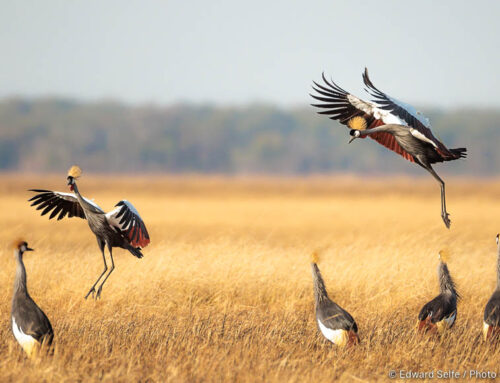Zambia’s coronavirus journey continues steadily. We are approaching 100 confirmed cases, all of which are in the central Lusaka area of the country. There is little movement of people around the country at this time and social distancing is still in place, though Government took the unexpected decision of allowing churches to re-open and conduct services. Social distancing and hygiene standards are supposed to be enforced during services, but this is unlikely to happen in most areas where the equipment required to achieve this is unaffordable.
Lockdown is a luxury that some wealthier nations are able to implement, but it is unrealistic for most developing countries where the population have little access to refrigeration in their homes so must go out for food on a daily basis. We are prepared for our own self-imposed lock-down should that become necessary but, until then, continue to enjoy the national park and very occasional village shopping trips.
Meanwhile, sightings in the National Park continue to thrill and amaze. I took my family out last week to check up on the leopard situation (more in my last blog entry). The leopard had moved on, but I decided to scout around and see if he could be found. Very distant baboon calls suggested that he might, so we followed them. Getting closer, we spotted a hyaena moving purposefully towards the same baboon ruckus. We tracked the hyaena and, as we got closer, we started to hear the unmistakable sound of hyaenas socialising or fighting. I hoped for some interesting behaviour and prepared my camera with a fast shutter speed; I didn’t dare to hope that it might be hyaenas who had recently stolen something from a leopard and were fighting over the remains.
Dropping down in to the pan where the sounds were coming from, we saw lions, then hyaenas, then vultures and then finally, a very large, very muddy object in a deep, flooded channel. I wasn’t immediately sure what the object was, but it was clearly the centre of all the attention. A closer inspection revealed that it was an adult giraffe which had met its end in the gloopy mud at the base of the channel.
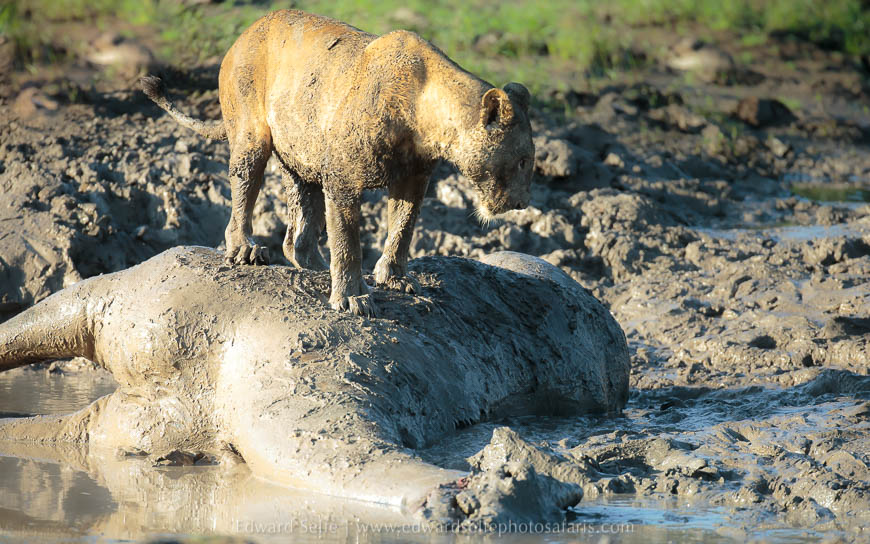
It wasn’t clear whether the lions had killed the giraffe, or even if the hyaenas had, but the smell was already pretty shocking. I even considered that it had died some time ago when the water levels were higher (since it was so evenly covered in mud) but the crocodiles would have made short work of it had that been the case. So we weren’t very sure the background to the demise of the giraffe, but I knew that we were in for a long and exciting story over the coming days!
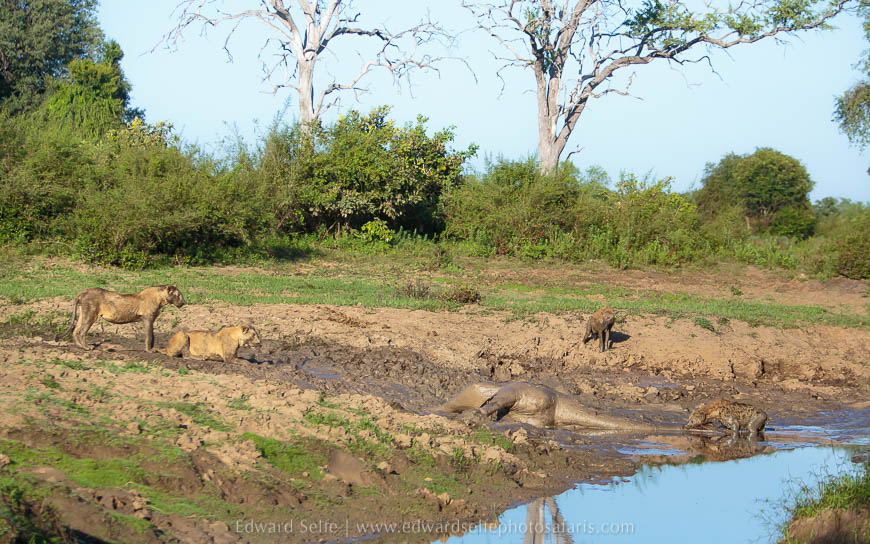
The lions were, as expected, dominant on the sighting at least while their bellies were still empty. The carcass was tough to get into, so the lions had to work hard to break off each chunk of flesh. We could hear their sharp carnassial teeth chewing through the hide to help them access muddy muscle below….there was little of the glamour that often follows lions around!
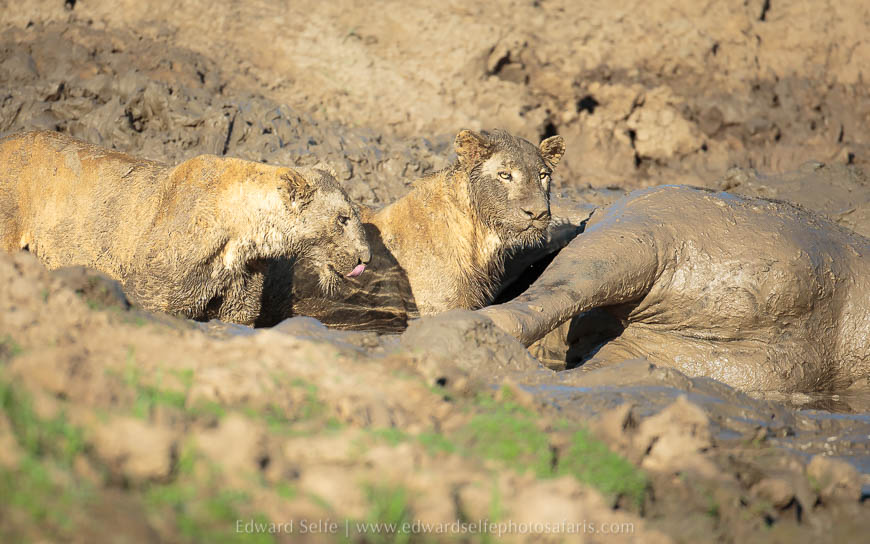
After a while, the hyaenas became bolder and started to feed alongside the lions, starting at the neck-end of the giraffe. It was interesting to watch them enviously noticing that the lions had access to the large stomach cavity while they were left with just a small access into the neck!
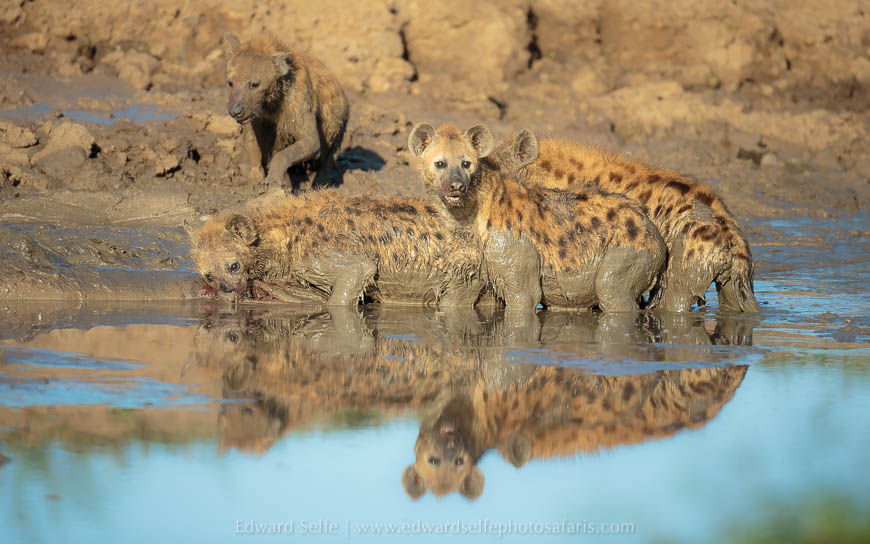
Occasionally the hyaenas would mount an attack on the larger predators, hoping to displace them. But with 8 lions in total (some were resting in the shade while others fed), there was little chance. However we had some interesting moments when the two predators faced off against each other!
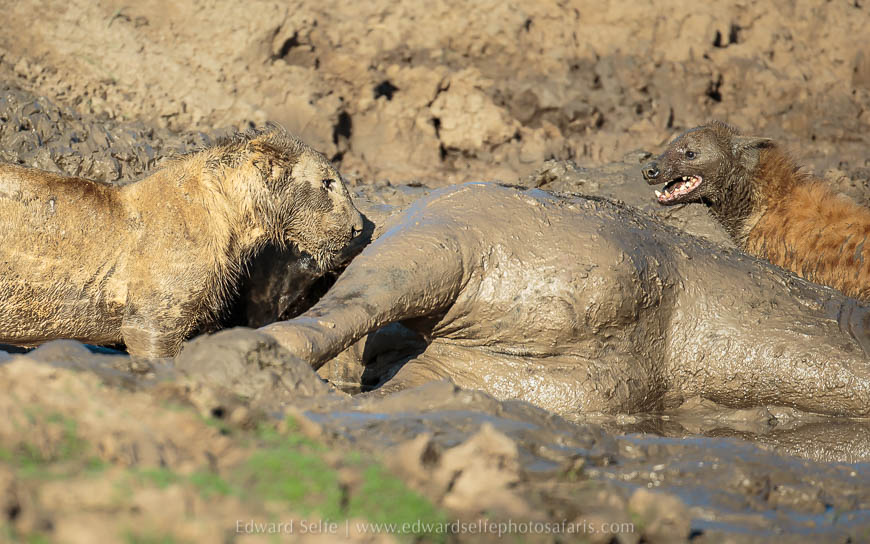
Eventually, the hyaenas gave up, presumably realising that the lions would not give up the prize just yet. By this time, the lions had left just one sentry at the carcass and the rest had retreated into the shade. However, the threat of the rest of the pride’s fury was enough to keep the scavengers away. They emerged from the muddy water, dripping wet and stinking, before shambling off into the shade.
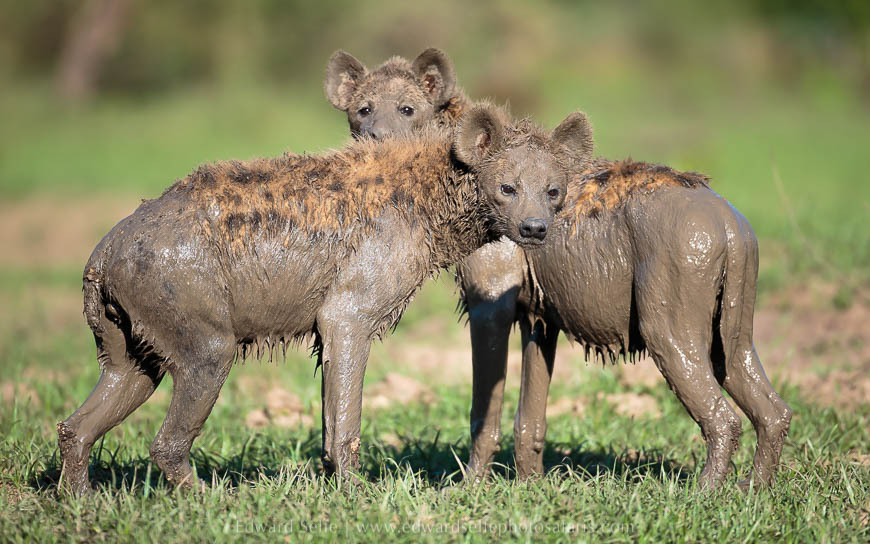
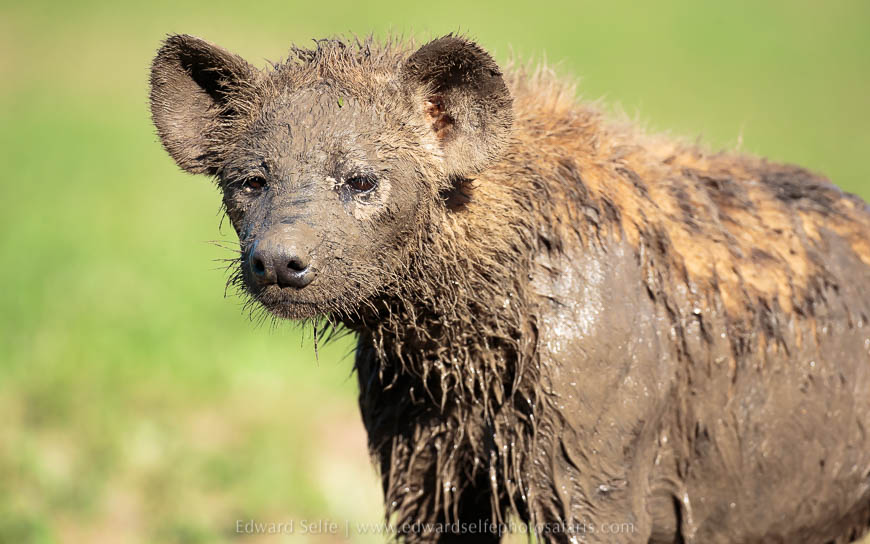
As well as photos, we took video footage to capture the incredible sounds of the competing predators at the start of the face-off. This perhaps shows the interaction and the tension better that still images ever could.
I returned a couple of times during the following few days; initially the lions were still there, but they moved off soon after. The hyaenas remained for several more days but then relinquished the carcass to the vultures. After 5 days, there was little left except bones and rotting skin; there was also evidence that the crocodiles had been there in the night to take their share!
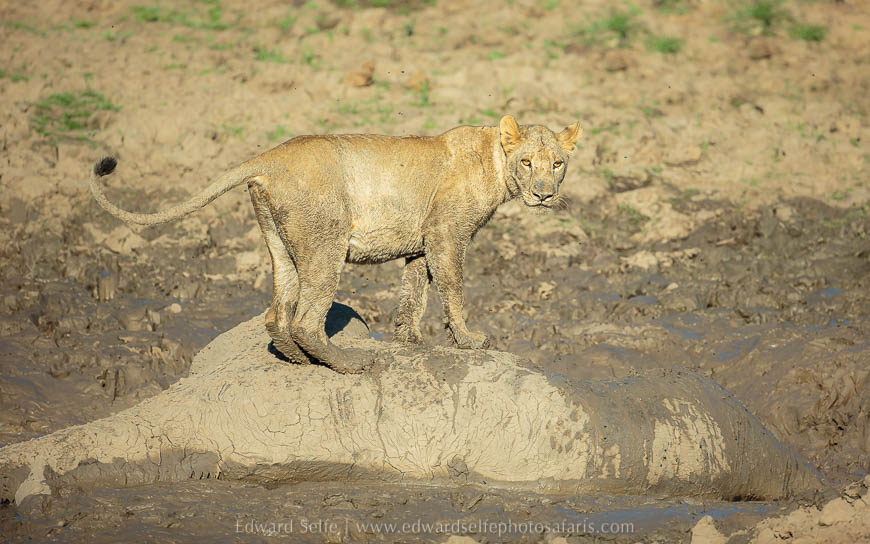
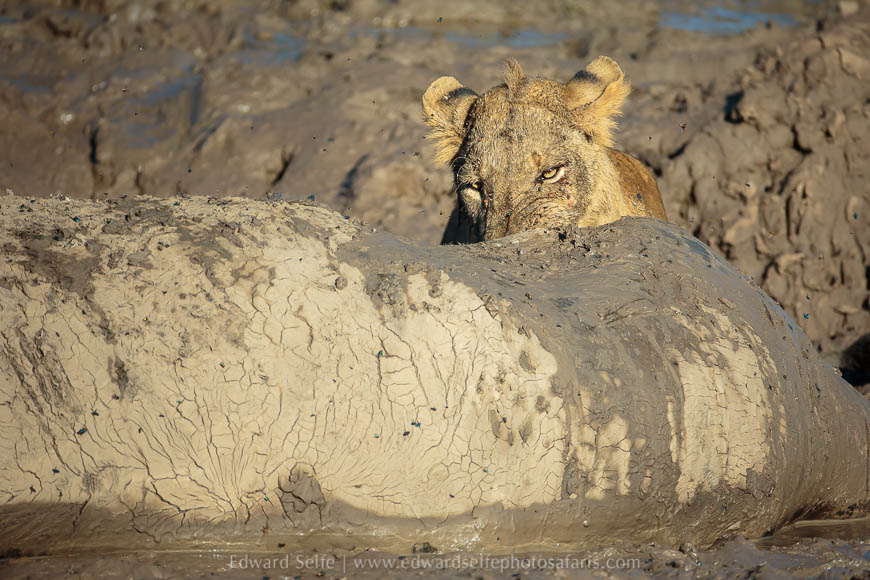
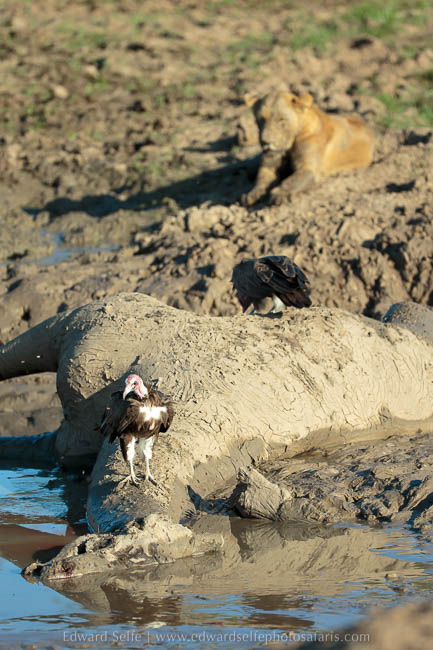
As usual, life just goes on as normal all around such sightings. I turned 180 degrees away from the stinking giraffe carcass and found the most beautiful sunset pushing through a grove of ebony trees; after their initial alarm calls for the lions, the baboons had returned to their normal life of squabbles and posturing and antelope were feeding close by. We assume that prey species will move away from predators to avoid becoming the next meal but in fact, most have territories to defend and are safer if they keep a predator in sight, rather than run from it….and if they run away, they simply risk running into the jaws of another predator!!
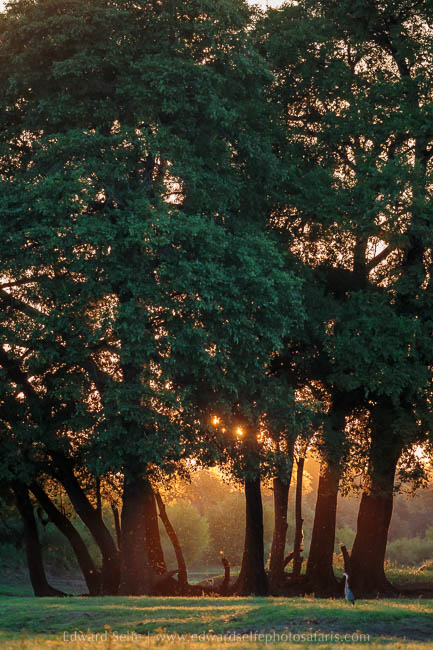
I spent a lot of time at the scene of the giraffe carcass this week, but nothing matched the initial morning for drama and action. We must have arrived soon after the lions and hyaenas found it, and there was still competition between them for feeding rights. Once those were established there was little conflict or action. But, each day, as the light softens and the mornings cool, there are many other sights to enjoy. I spent over an hour with a herd of elephant bulls during the best of a morning’s light, just enjoying their reassuring presence and taking shots as they greeted, tussled and meandered amongst the large trees. There is little in the world more relaxing than spending time with massive elephant bulls.
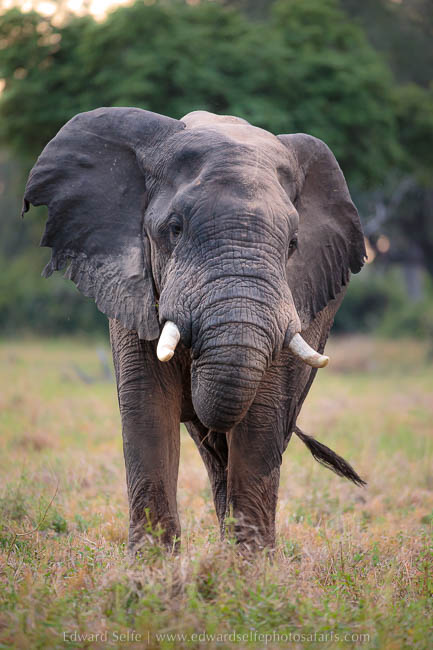
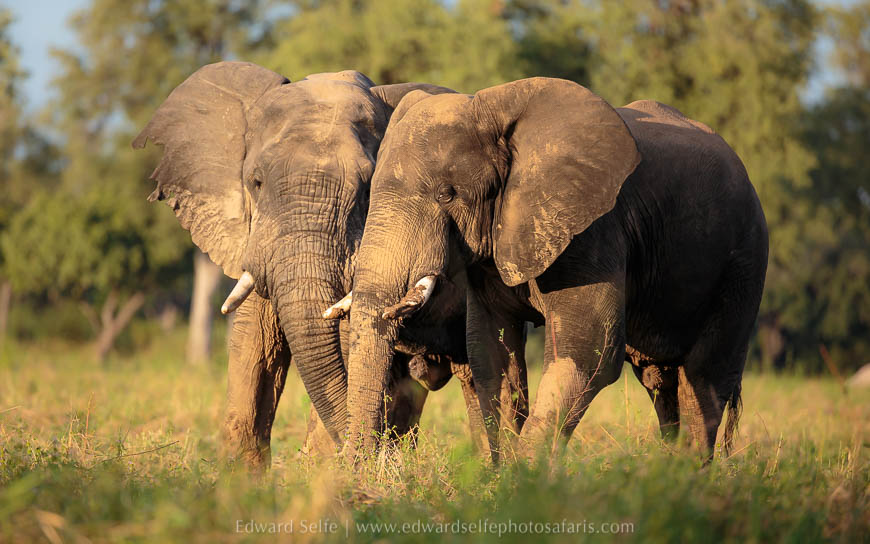
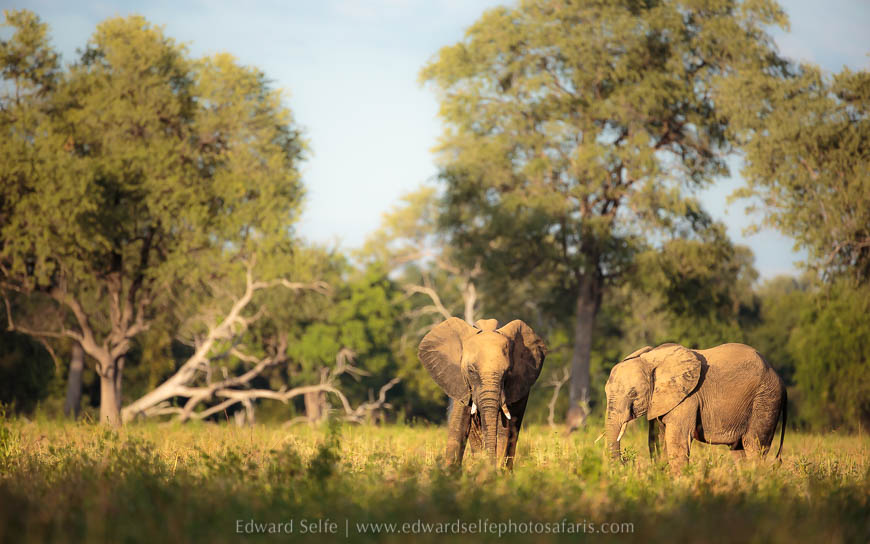
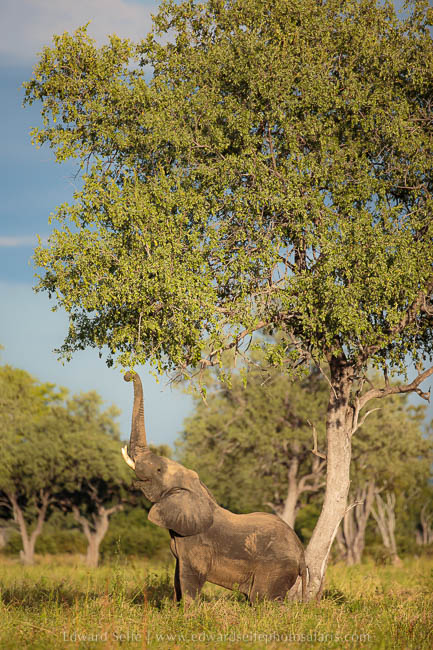
Thanks for reading and for following my lockdown safari posts; we know how fortunate we are to live full time in the South Luangwa, and it’s not something that we take for granted. The small number of people and relative isolation brings its own challenges, but during these times of COVID-19 it is a blessing. Stay safe everyone.

